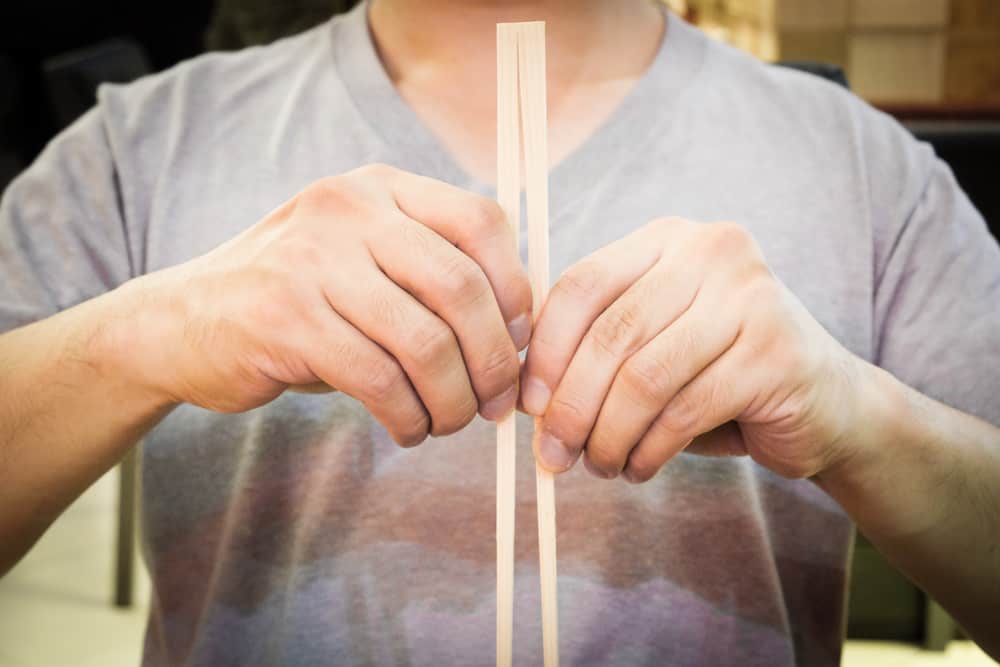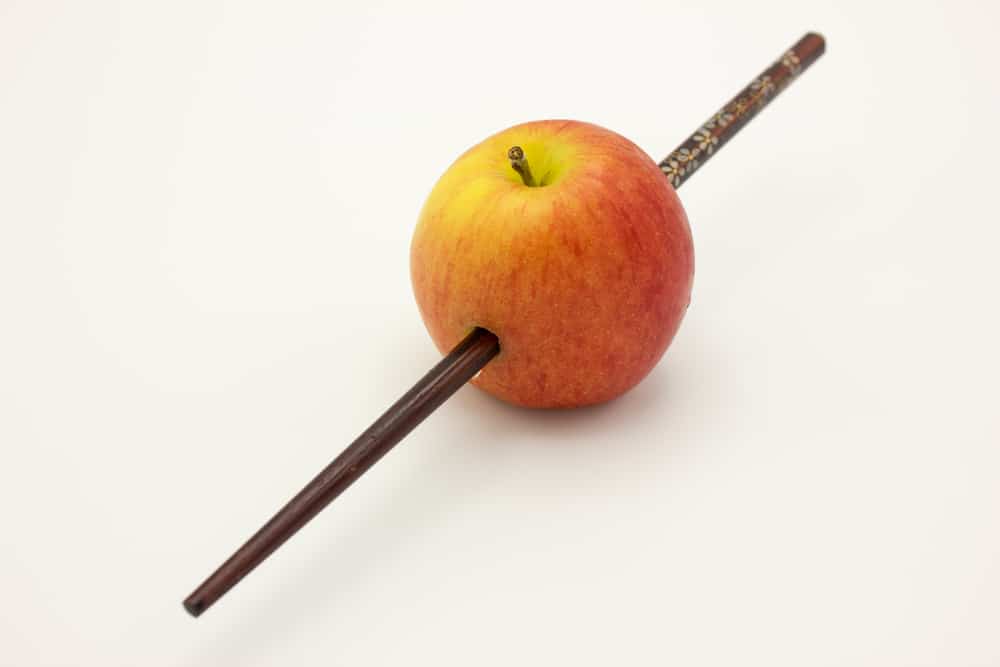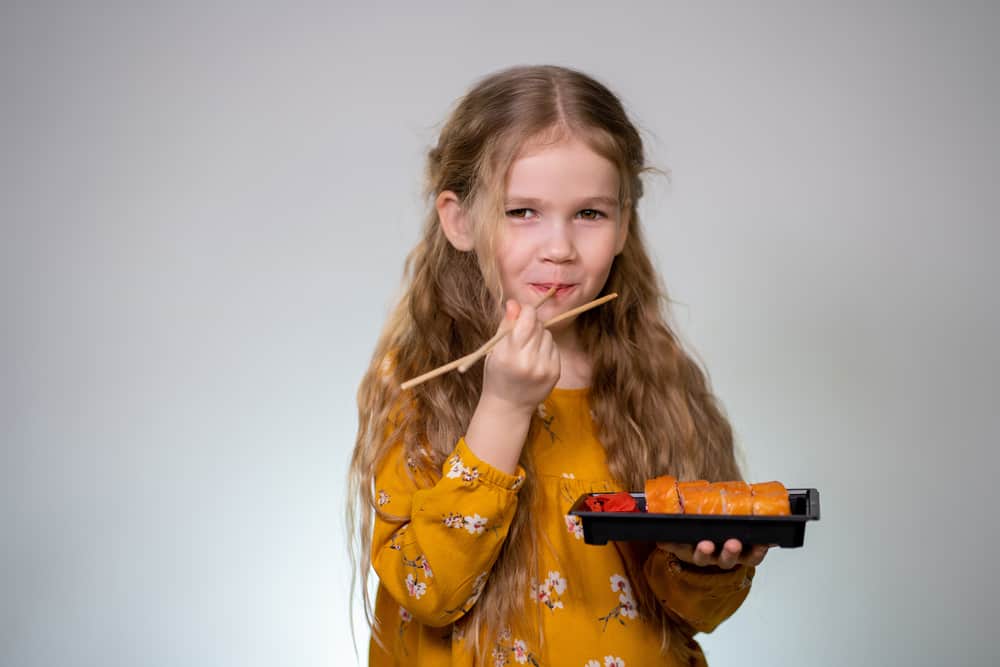When it comes to eating in Japan, you can expect to ditch the fork and knife as chopsticks are king in the land of sushi, takoyaki, and gyoza. However, just when using two slender sticks to pick up tiny grains of rice didn’t seem like enough of a challenge, did you know that Japan also has a number of strict etiquette rules related to proper chopstick usage? Let’s learn about some of the most common mistakes people make with chopsticks when they come to Japan so that you can start saying "itadakimasu" instead of "sumimasen!"
1: Rubbing the Chopsticks Together

For some reason, in Western countries, the idea that you need to rub disposable chopsticks together in order to remove splinters is widespread and feels almost sacrilegious for some not to do before starting a meal.
In Japan, however, this act is actually seen as fairly offensive to restaurant owners as it implies that you think that the chopsticks are of low quality. In Japanese, there is actually a term, “kosuri-bashi,” for this chopstick sin.
If you do happen to make an unclean break in your chopsticks and have some fragments poking out, just go ahead and remove them by hand. In the off chance that the chopsticks are unsalvageable, just go ahead and ask for another pair.
2: Skewering Your Food With the Chopsticks

We get it. At times, using chopsticks can be frustrating, and sometimes picking up a slippery egg in your ramen or trying to get a good grip on an oily tomato in your salad can make you just want to give up and impale it with your chopstick the old-fashioned way.
The word for this chopstick sin is "sashi-bashi" in Japanese. While perforating your food can make it easier to eat, it is seen as poor table manners and your company might get the impression that you are a bit uncouth as a person. Best to leave the stabbing and cutting to the chefs.
3: Cutting Food With Your Chopsticks

Traditional Japanese food is intentionally prepared and served in a way that does not require you to change or alter it in any way after it is served. In fact, typically all of the cutting and slicing is done in the kitchen since the general expectation is that once the food is served, all guests need to do is sit back and enjoy the meal without doing anything further.
By using your chopsticks to commit the sin of “chigiri-bashi” and cutting food with the chopsticks like you would use a knife and fork, it sends the message that you do not think that the meal was prepared properly and can even offend the chef.
4: Resting Your Chopsticks on the Table
As you eat, your chopsticks will undoubtedly get dirty from the sauces, seasoning, and saliva. So, do you really want all that mess resting on your table while you take a pause during your meal?
Luckily, this is what hashioki are for. Known in English as “chopstick holders,” they are little rests for your chopsticks that serve the purpose of elevating the ends of your chopsticks so that none of that grime gets on your nice kitchen table.

Traditionally, hashioki are made from wood, bamboo, or ceramic, but they also come in all sorts of fun shapes and sizes such as turtles and even pandas!
Get yourself a chopstick holder or three at BECOS. They're made by hand by incredibly talented and knowledgeable Japanese craftspeople, and will not only keep your chopsticks from rolling around but also elevate the presentation of your meal.
5: Licking and Biting Your Chopsticks

There is absolutely no reason that you should be munching and gnawing on your eating utensils like sticks of Pocky. “Neburi-bashi” or licking your chopsticks is another big no-no and may discourage Japanese people from eating with you again.
In general, it's best just to use your chopsticks as intended to pick the food off of your plate and directly into your mouth. Don’t keep your chopsticks in your mouth too long though, as this is considered “kuwae-bashi” and is just as nasty as biting or licking your chopsticks.
6: Touching Food You Don’t Intend to Eat

Even those who are most vigilant in avoiding neburi-bashi and kuwae-bashi can’t avoid making contact between the tips of their chopsticks and their mouth.
It’s okay, sometimes it can’t be helped. That being said, do you really want the chopsticks that have been in or around someone else’s mouth all over the food you’re about to eat?
That’s why the general unspoken table rule is if you touch it, take it.
7: Searching for a Specific Food Using Your Chopsticks

Japanese food is first eaten with the eyes, then with the mouth.
Often when traditional Japanese food is served, it is carefully plated to appeal to one’s aesthetic senses. When you trifle through an elegantly arranged meal like a raccoon rummaging through trash in the chopstick sin of “sagashi-bashi,” you are not only getting your germs all over everything, but you are also ruining the display for everyone.
If there is something that you want to take out of a shared meal, move with precision and accuracy rather than engaging in an aimless search.
8: Pointing With Your Chopsticks

Pointing, in general, is considered rude in Japan and should be avoided, especially with chopsticks. Never use your chopsticks to point at another person or something in the room, and restrain from using your chopsticks to point at the food on the table. Using your chopsticks to point reflects poorly on your image and may give people the wrong idea about the type of person that you are.
9: Passing Food to Another Person With Chopsticks

“Utsushi-bashi” is the sin of passing food between two people using your chopsticks.
Germs aside, there is a much deeper cultural reason that this is frowned upon in Japan. During Buddhist funerals, after the body of the deceased is cremated, the remains are then passed between attending members using chopsticks. Since utsushi-bashi imitates this ritual, it is considered impolite and culturally inappropriate.
10: Standing Your Chopsticks Up in the Bowl

Just like utsushi-bashi, the reason that we don’t commit the chopstick sin of “tate-bashi” is because it all comes back to Japanese funeral rituals.
During a Buddhist funeral ceremony, a bowl of rice with chopsticks sticking straight up is left at the head of the body as an offering. This practice is called “makura-gohan” and if you accidentally do it during a meal, it may bring up some unpleasant memories for those around you. If you really need to set your chopsticks down, use chopstick holders.
Watch Out When Using Chopsticks!
Are you guilty of any of these chopstick sins?
While using chopsticks may be difficult at first, at least now you know what NOT to do in the presence of company.

If you are really looking to impress Japanese guests, beyond table manners, we recommend investing in a nice set of quality chopsticks such as this lovely Kotobuki Gold and Silver Crane Set of chopsticks from Hashimoto Kousaku Sikki. Not only do they invite elegance and luxury into mealtime, but they make great presents and can even be customized to have words (such as your name) engraved into them!
▶︎ Take a look at the other chopsticks sold on BECOS
▶︎ Take a look at Hashimoto Kousaku Sikki's other products sold on BECOS
Related articles:
▶︎ 5 Chopstick Sets and Utensils That Will Make You Fall in Love with Japanese Cutlery
▶︎ Traditional Japanese Crafts: The Complete Guide to Japanese Lacquerware
*These products may not be able to be shipped to certain countries. Please see the BECOS website for more information.
